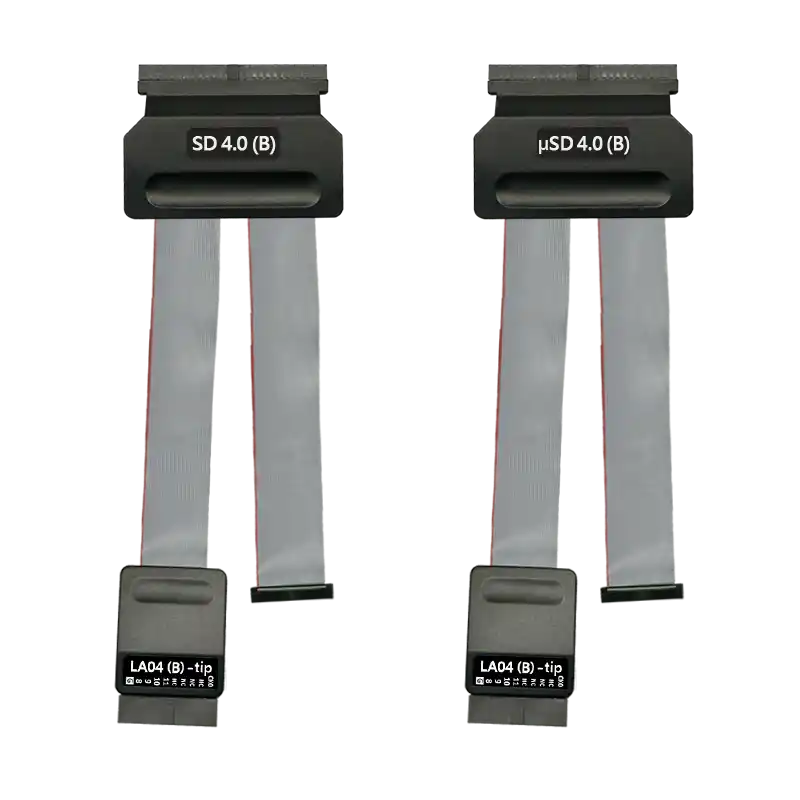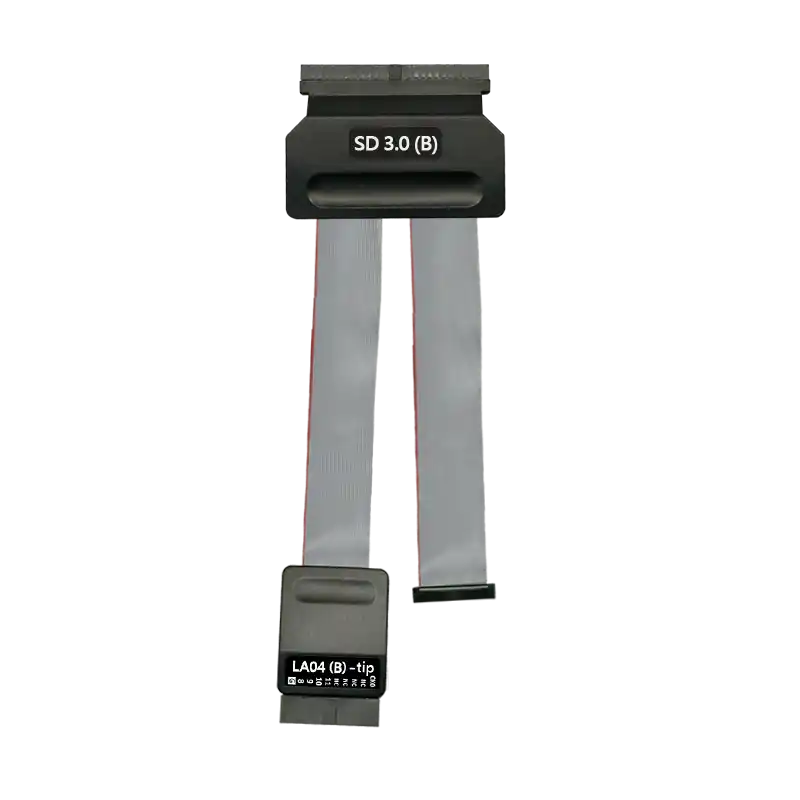UHS-I (SD 3.0 / SDIO 3.0 / SD 6.1 Legacy mode)、UHS-II (SD 4.1)
UHS (Ultra High Speed) is a technology standard designed for SD cards to improve data transfer speeds. UHS-I and UHS-II are two generations of this standard, each offering unique features.
UHS-I supports a maximum bus speed of 104 MB/s, ideal for most general applications, including photography and Full HD video recording. These cards use a single row of pins for data transfer, ensuring broad compatibility with devices like cameras, smartphones, and laptops.
UHS-II, on the other hand, significantly boosts performance with speeds up to 312 MB/s. This is achieved through an additional row of pins, enabling faster data transfer for tasks like 4K video recording or burst photography. However, devices must support UHS-II to leverage its full speed potential.
Protocol Analyzer
(1) BF7264 Pro with SD 4.1 Option (UHS-II / UHS-I)
• Supports SD 4.0 (UHS-II), up to 1.56 Gbps per lane
• Supports SD 4.0 (UHS-II) trigger and decoding:
- Displays SD 4.0 protocol packet data in table format, including command analysis.
- SD 4.0 command statistics, including total packet count, command type counts, and error statistics.
- SD 4.0 command trigger function.
• Supports SD 6.1 Legacy mode / SD 3.0 / SDIO 3.0 trigger and decoding:
- Displays SD 6.1 Legacy mode / SD 3.0 protocol packet data in table format, including command analysis.
- SD 6.1 Legacy mode / SD 3.0 command statistics, including total packet count, command type counts, and error statistics.
- SD 6.1 Legacy mode / SD 3.0 command trigger function.
- SD 6.1 Legacy mode Command Queue.
- Supports rates SDR12, SDR25, SDR50, SDR104, DDR50, DDR200, DDR225.
• Protocol Analyzer functions for SD 6.1 Legacy mode / SD 3.0 / SDIO 3.0 / SD 4.0:
- Fully captures the process from low-speed initialization to high-speed data transfer.
- Provides a Data Filter function to filter out unnecessary data and save memory.
- Offers Search data functionality.
- Supports CRC Packet calculation and error display.
- VDD detection.
(2) BF7264 Pro with SD 3.0 / SDIO 3.0 Solution (UHS-I)
• Functions:
- 3-Pin Mode: If only CMD and BUSY waveform data are required, the convenient 3-Pin Mode enables measurement without connecting all pins. Simply connect CLK, CMD, and D0 pins to measure CMD data.
- No Clk Mode: For long-term measurements requiring only CMD waveform recording, the transition storage can be used to record CMD pin waveforms and decode data.
• Supports trigger, decoding, and protocol analysis for SD 6.1 Legacy mode / SD 3.0 / SDIO 3.0:
- Fully captures the process from low-speed initialization to high-speed data transfer.
- Provides a Data Filter function to filter out unnecessary data and save memory.
- Provides Search data functionality.
- Supports CRC Packet calculation and error display.
- Displays SD 6.1 Legacy mode / SD 3.0 protocol packet data in table format, including command analysis.
- SD 6.1 Legacy mode / SD 3.0 command statistics, including total packet count, command type counts, and error statistics.
- SD 6.1 Legacy mode / SD 3.0 command trigger function.
- SD 6.1 Legacy mode Command Queue.
- Supports rates SDR12, SDR25, SDR50, SDR104, DDR50, DDR200, DDR225.
*The BusFinder product provides three types of adaptors, which can be selected based on the device under test.
(3) TL4234B Logic Analyzer
• Supports trigger and decoding for SD 6.0 Legacy mode / SD 3.0 / SDIO 2.0:
- Fully captures the process from low-speed initialization to high-speed data transfer.
- Includes Search data functionality.
- Supports CRC Packet calculation and error display.
- SD 6.0 Legacy mode.
- Supports rates SDR12, SDR25, SDR50, SDR104, DDR50.
Display SD4.0 protocol packet data in tabular form, including command parsing
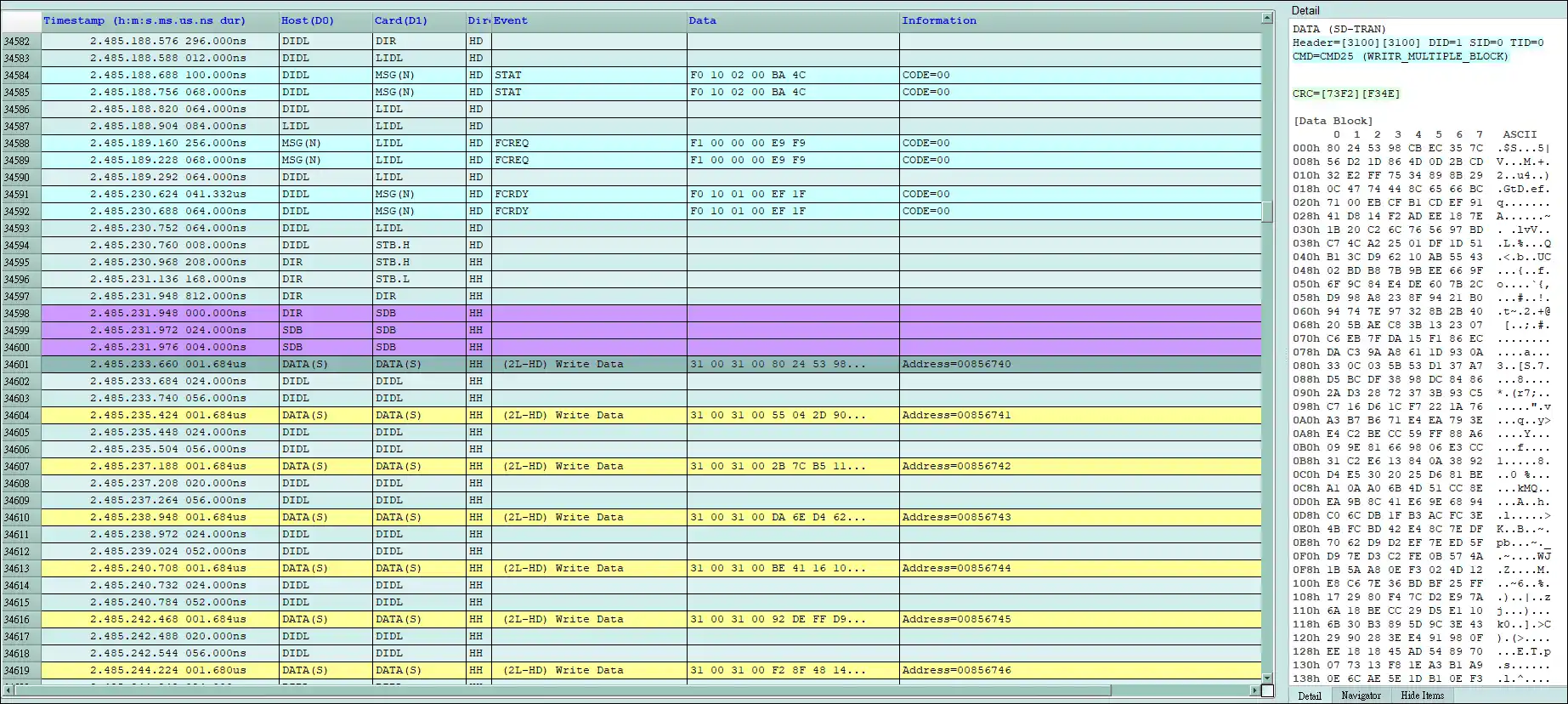
SD 4.0 command statistics
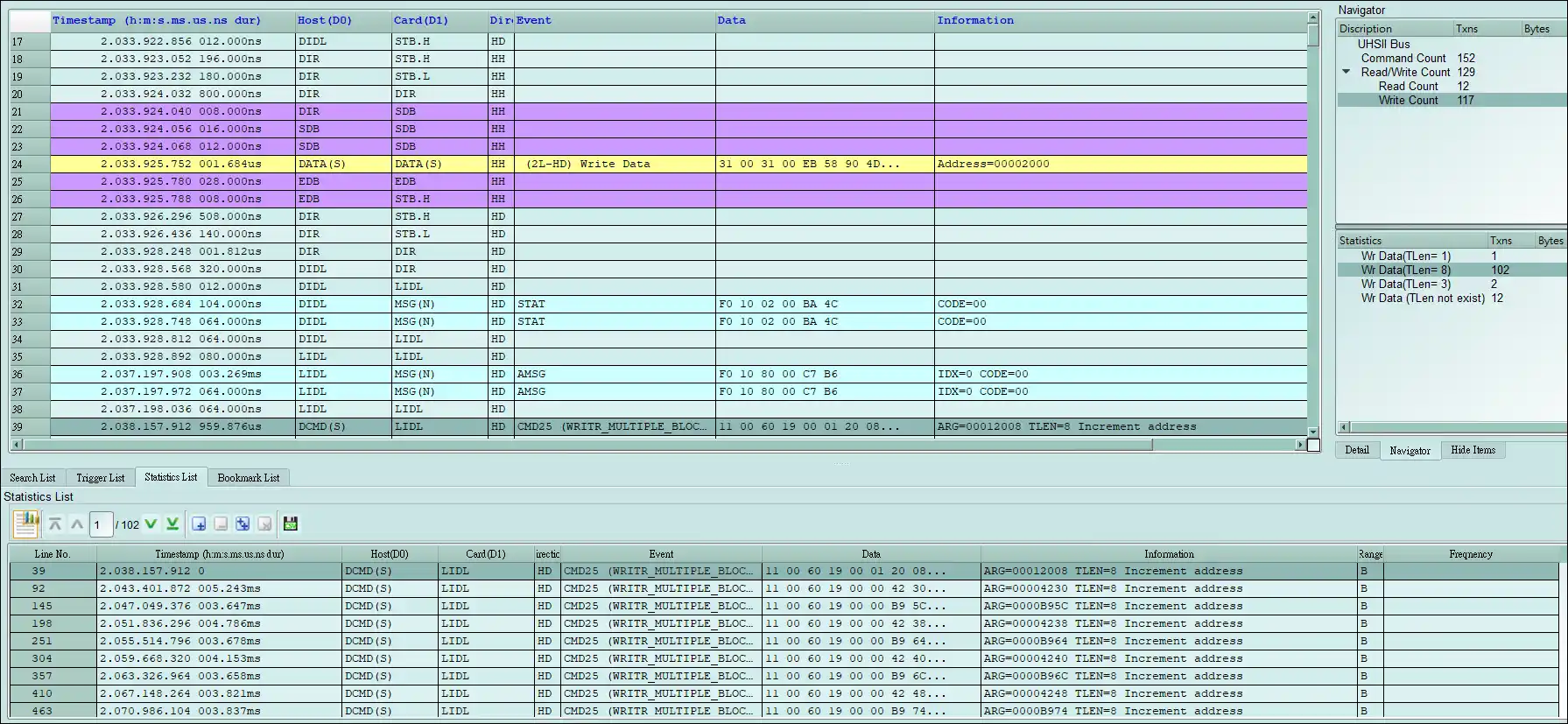
SD 3.0 Decode
3-Pin Mode
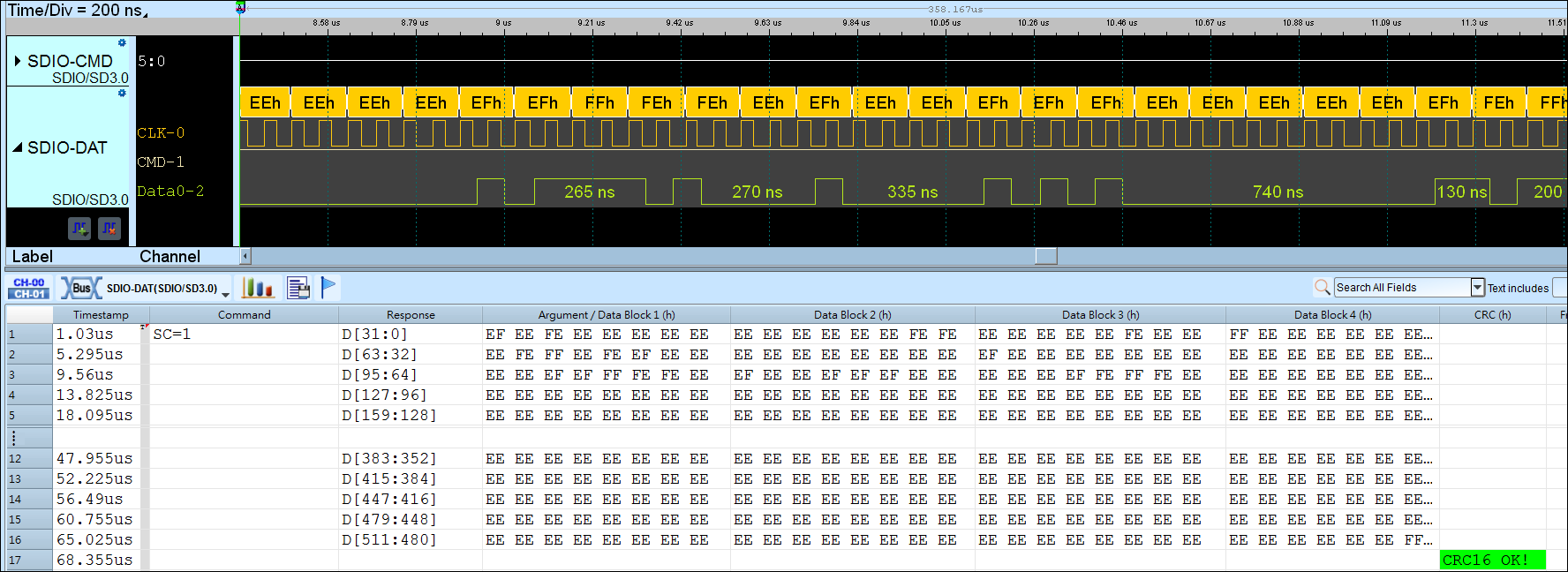
No Clk Mode

SD 3.0 command statistics
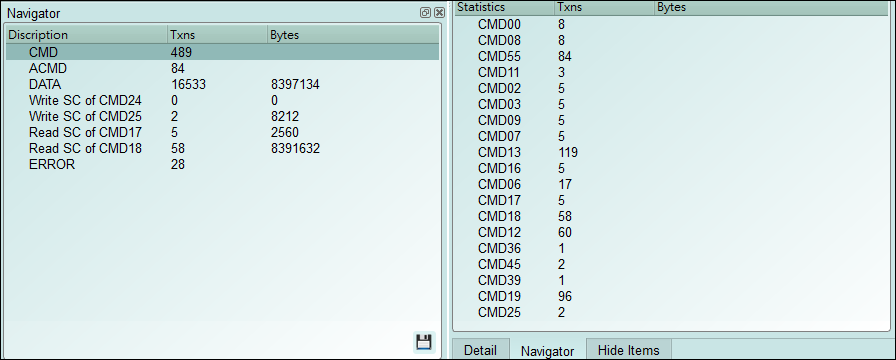
Probe and test object connection diagram
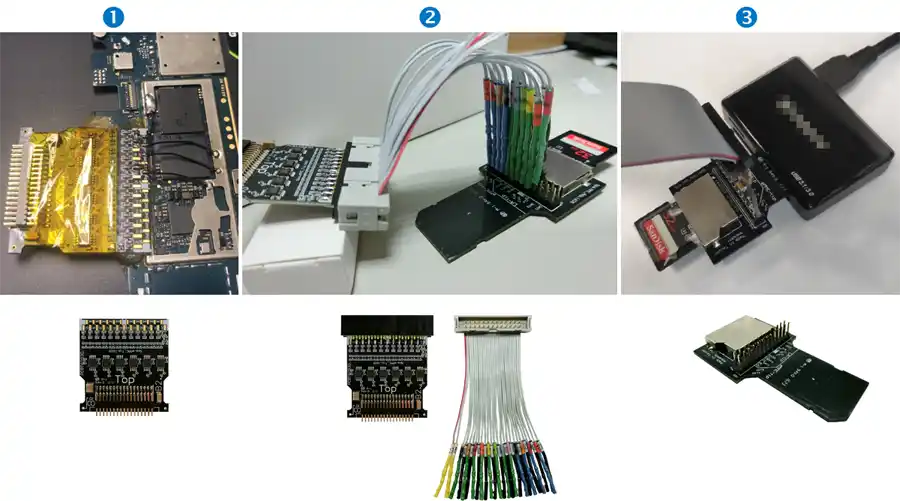
1. For SD or SDIO without pins on the PCB
2. For SD or SDIO with pins on the PCB
3. For SD adaptor
* Suggestion:The bonding wire distance is about 3cm (the shorter the better), and 100~75 ohm resistance can be added for anti-reflection to improve the measurement quality
